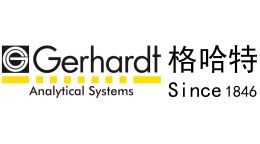方案详情文
智能文字提取功能测试中
Veterinarni Medicina, 65, 2020(12):553-563Original Paperhttps://doi.org/10.17221/42/2020-VETMED 百里香叶作为环保饲料添加剂可提高兔子在炎热气候条件下的生产力和繁殖性能 Thyme leaves as an eco-friendly feed additiveimproves both the productive and reproductiveperformance of rabbits under hot climaticconditions AHMED EzZAT AHMED2* MOHAMMED ALI ALKAHTANI,AHMED ABOUBAKERABDEL-MONIEM ABDEL-WARETH Department of Biology, College of Science, King Khalid University, Abha, Saudi ArabiaDepartment of Theriogenology, Faculty of Veterinary Medicine, South Valley University,Qena, Egypt 3Department ofAnimal and Poultry Production, Faculty of Agriculture, South ValleyUniversity, Qena, Egypt *Corresponding author: aabdelrahman@kku.edu.sa; ahmed.ezzat@vet.svu.edu.eg Citation: Ezzat Ahmed A, Alkahtani MA, Abdel-Wareth AAA (2020): Thyme leaves as an eco-friendly feed additiveimproves both the productive and reproductive performance of rabbits under hot climatic conditions. Vet Med-Czech65,553-563. Abstract: The present study examined the efficiency of thyme in improving the productive and reproductive per-formances in male rabbits living in hot climates with the further lowering of the faecal ammonia and adverse heatstress. One hundred and twenty-five Zealand-White male rabbits were assigned to five dietary treatments [age:60-day-old; body weight (b.w.): 1 362±20g](n=25). The basal diet was supplemented with either 0 (control), 4,8,12 or 16 g/kg of thyme leaves. The experiment lasted for 90 days. The feed and water were provided ad libitum.The ani re housed in an open system (39℃ ambient-temperature and 30-35% relative-humidity). The dietarythyme leaf levels significantly improved the appetite, body weight gain and growth performance compared to thecontrol(P<0.001). The weight gain and feed conversion ratio were directly proportional to the thyme leaves intake.The faecal ammonia was markedly lowered in response to the feeding with thyme leaves. The thyme leaves signifi-cantly improved the liver and kidney functions as indicated by their biomarkers. The testosterone concentrations andsemen characteristics were also significantly improved in the thyme leaves-treated groups compared to the control(P<0.01). In conclusion, thyme leaves, at an optimum dose of 16 g/kg of the diet, could be an efficient feed additivefor rabbits surviving under hot climatic conditions. Keywords: ammonia; weight gain; testosterone; semen quality; thymol Recently, animal production, in general, and rab-bit production, in particular, have developed rapidly,most notably to meet an increased demand in freshmeat for human consumption as well as extra income for families or small farmers (Abdel-Wareth et al.2015). Food safety and environmental conditionsare two major challenges facing rabbit production.EU regulations [Regulation (EC) No. 1831/2003] ( Funded by the Deanship of Scientific Research at King Khalid University through the General Research Project (No. R.G.P.1/157/40). ) have banned the use of antibiotics as growth pro-moters when feeding animals, due to the possibleresistance to antibiotics and the presence of antibi-otic residues in products of animal origin intendedfor human consumption. Subsequently, several re-search articles have been conducted to explore theuse of phytogenics as alternate feed additives inrabbit nutrition. Herbs and herbal products wereincorporated in rabbit diets to stimulate the pro-ductive and reproductive performance of rabbits.Phytogenic substances have generally been knownas being safe and have frequently been used in foodand feed industries (Raskovic et al. 2015). Moreover,herb extracts could have a beneficial impact on theanimal performance, health status, and welfare un-der hot environmental conditions (Attia et al.2016).Thyme (Thymus vulgaris L.) has traditionally beenused in herbal medicine. The active constituentsof thyme have shown to have antimicrobial andan-tioxidant properties which promote the appetite andgrowth performance in rabbits (Raskovic et al. 2015;Abdel-Wareth et al. 2018; Abdel-Wareth et al. 2019).Likewise, the supplementation of 0.5 g/kg thymeoil significantly improved the gut integrity andantioxidant status of rabbits (Placha et al. 2013).The main components of thyme oil are thymol, car-vacrol,p-cymene, y-terpinene, linalool, β-myrcene,and terpinen-4-ol (Lee et al. 2005; Abdel-Warethet al. 2018). Those active components have anti-oxidant properties (Rota et al. 2008) reducing theserum cholesterol and the carcass fat (Abdulkarimiet al. 2011). Most of the research on dietary thymeoil supplementation was carried out using rabbits(Placha et al. 2013; Abdel-Wareth et al.2018) andhas indicated a role in stimulating the feed intake,body weight gain, meat quality, antioxidants, gutintegrity and thus improving the overall feed con-version ratio. However, no information is available about theeffects of thyme leaves on the productive and re-productive performance in male rabbits under hotenvironmental conditions. Thus, the present study aimed to clarify the ef-fects of thyme leaf supplementation on the maleproductive and reproductive performance in rabbitsin hot environments, including: the feed conversionand growth rates, kidney and liver functions, faecalammonia concentrations, semen quality and testos-terone levels in response to different concentrationsof thyme leaves in the diet of male rabbits, such asthose living in Upper Egypt during the summer. MATERIAL AND METHODS The Institutional Animal Care and Use Com-mittee of the South Valley University approvedthe experimental protocol (No. of the ethical ap-proval-SVUAGR62018) used in this study in ac-cordance with the guidelines of Egyptian ResearchEthics Committee and the guidelines containedin the Guide for the Care and Use of LaboratoryAnimals (NRC 2011). Thyme leaf powder preparation and analysis The ingredients and chemical composition of thebasal diets and rations given to the rabbits are listedin Table 1. The thyme leaves were purchased from a localseller of medicinal herbs (Spices and Herbs SeadaEl-Attar company, Qena, Egypt). The thyme leaveswere ground into particles of less than 1 mm in sizeand were stored in air-tight containers at room tem-perature until used. The essential oil percentageof the thyme leaves were extracted by hydro-distilla- Table 1. Ingredients and chemical composition (as-fedbasis) of the control rations fed to the rabbits through-out the experimental periods Ingredients % Chemical analysis % Yellow maize grain 32.00 Dry matter 91.40 Wheat bran 20.00 Ash 9.80 Soybean meal (44%CP) 18.00 Crude protein 17.00 Wheat straw 12.00 Crude fibre 12.60 Lucerne hay 5.00 Ether extract 2.90 Rice bran 5.00 Digestible energy (MJ/kg) 9.42 Linseed straw 2.80 Calcium 1.30 Sunflower meal 2.50 Phosphorus 0.86 Lime stone 2.00 Lysine 0.60 Sodium chloride 0.30 Methionine 0.41 Vitamin-mineral premix 0.30 DL-Methionine 0.10 Per kg of rations: vitamin A 10 000 IU, vitamin D3 900 IU,vitamin E 50.0 mg, vitamin K 2.0 mg, vitamin B 2.0 mg,folicacid 5.0 mg, pantothenic acid 20.0 mg, vitamin B6 2.0 mg,choline 1 200 mg, vitamin B12 0.01 mg, niacin 50 mg, biotin0.2 mg, Cu 0.1 mg, Fe 75.0 mg, Mn 8.5 mg, Zn 70 mg tion in a Clevenger-type (Laboratoire PhytoChemia,Quebec,Canada) apparatus for 3 h according to themethod of Abozid and Asker (2013). The essential oil extracted was dried over anhy-drous sodium sulfate and analysed by gas chroma-tography using a Delsi 121C gas chromatograph(GC) model fitted with a CPWA×52 CB column(30 m x 0.32 mm; film thickness 0.25 um). The oventemperature was programmed to increase from50°C to 300°C at 4°C/min and both the injectorand detector temperatures were set at 240°Cand255°C, respectively. The carrier gas was nitrogenat a flow rate of 1 ml/minute. The constituents wereidentified by a coupling gas chromatography withmass spectrometry (GC-MS), using a Sigma 300apparatus attached to an HP 5970 300 mass spec-trometer. The ingredients of the thyme leaves detected bythe GC-MS showed various compounds and poly-phenolic thymol was the most detected ingredientof the thyme leaves (50.85%) as exhibited in Table 2. Experimental animals, design andmanagement The rabbits were housed under similar managerial,hygienic, and environmental conditions during thetotal experimental period of 90 days. Throughoutthe trial, the rabbits were handled according to theprinciples of experimental animal care (Lebas et al.1984), and approved by the Ethics Committee ofthe Animal and Poultry Production Departmentof the South Valley University. During the experi-ment, the animals were regularly inspected withregards to their health status and general bodycondition. Assessment of the body condition wascarried out by touching the ribs, pelvis, and spine. One hundred and twenty-five, 60-day-old NewZealand White male rabbits (average body weight1 362±20 g) were assigned to five dietary treat-ments. The basal diet was supplemented with thymeleaves at: 0 (control), 4, 8, 12 or 16 g/kg of the diet.The diets were formulated according to the require-ments of growing rabbits as recommended by theNational Research Council (NRC 1977). The in-gredients, chemical composition and energy valueof the experimental diets are presented in Table 1.During the whole experiment, all the animals in allthe treatments received the pelleted diet for an ad li-bitum consumption11.. Table 2. Gas chromatography-mass spectrometry (GC-MS) based on the active components in the thyme leaves RT Area (%) Compounds 4.40 1.84 α-pinene 4.82 1.74 camphene 5.81 0.97 p-myrcene 6.66 0.59 α-humulene 6.96 30.36 cymol 7.16 1.31 1,8-cineole 8.02 3.01 y-terpinene linalool 9.62 0.80 11.57 0.90 camphor 12.52 2.77 endo-borneol 12.87 0.38 4-terpineol 14.84 0.53 thymol methyl ether thymol 17.68 50.85 22.42 1.53 trans-caryophyllene 29.05 1.05 caryophyllene oxide 31.47 0.38 tau-cadinol RT= retention time The animals were individually kept in cages (44 cm ×50 cm x35 cm) of galvanised wire net, equipped witha manual feeder and automatic drinker. The rabbits were kept in an open house system(naturally ventilated room by windows and ceilingfans) with an average temperature of 39.5±2℃anda relative humidity ranging from 30-35% during theexperimental period. The rabbits were kept in a photoperiod of 16 hof light and 8 h of darkness. Fresh municipal waterwas available ad libitum via stainless steel nippleslocated inside each cage. The body weight and feed intakes (g/rabbit)were recorded throughout the experimental peri-ods of 60-90, 90-120,120-150 and 60-150 daysof age. The feed conversion ratio was calculated bydividing the feed consumption by the average bodyweight gain during the experimental periods of 60-90,90-120,120-150 and 60-150 days of age. Signsof diarrhoea were daily documented and mortalitywas recorded if it occurred. Feed and faeces chemical analysis Samples of the feed and faeces were analysed formoisture by oven drying (method number 930.15),for ash by incineration (942.05), for protein by the Kjeldahl method (984.13), and for ether extractby a Soxhlet fat analysis (954.02), for calcium(927.02) and phosphorous (935.59) as describedby the Association of Official Agricultural ChemistsInternational (AOAC 2006). The gross energy wasdetermined using adiabatic bomb calorimetry (ParrInstrument Company, IL, USA). At the end of theexperiment, fresh faecal samples from all the rabbitswere collected then stored at -20Cuntil being ana-lysed for ammonia. Ammonia-N (mg NH3-N/30ml)from both the blank and syringes containing a sub-strate (NH3-N sample) was measured by distillation(Vapodest 50s carousel; Gerhardt, Konigswinter,Germany). Semen collection and evaluation As the biological material, the quality of the se-men ejaculates of the sexually mature and healthymale New Zealand White rabbits (145 days of age)were assessed as described by El-Desoky et al. (2017)and Abdel-Wareth et al. (2019). Semen was collectedfrom twenty rabbits (one ejaculate per rabbit) pertreatment at the end of 150 days. The ejaculateswere collected using an artificial vagina. The vol-ume of each ejaculate was recorded using a gradu-ated collection tube after removal of the gel mass.The assessment of the live, dead, and abnormalsperm was performed by counting 200 sperm cellsusing an eosin-nigrosine blue staining mixture. Thecomplete or partial purple-stained sperm cells wereconsidered non-viable, whereas the non-stainedcells were viable. The percentage of the motilesperm (progressive forward motility %) was per-formed in several microscopic fields in the semensamples under x 100 magnification using a lightmicroscope with a hot stage and subjectively as-sessed from 0% to 100%. Blood indicators Fifteen representative rabbits from each treat-ment group were subjected to anaesthesia by an in-tramuscular injection of ketamine and xylazine,and then 10 ml of blood was withdrawn from theear vein of each animal. The serum was obtainedby centrifugation of the coagulated blood at 1 372 gfor 15 min and the serum was collected and storedat -20°Cuntil used in the biochemical assays. The serum testosterone concentrations were colorimet-rically assayed by using immunoassay commercialkits (Monobind Inc., Lake Forest, CA, USA). Theliver enzymes, aspartate transaminase (AST) andalanine transaminase (ALT), as well as kidney func-tion biomarkers, i.e., urea and creatinine were de-termined using standard diagnostic kits (MonobindInc., Lake Forest, CA,USA). Statistical analysis A statistical analysis was performed using a com-pletely randomised design and the general linearmodel (GLM) procedure of SAS v9.2 (SAS Institute,NC, USA). The model only included the level of thethyme leaf supplementation. An individual rab-bit was the experimental unit for all the analyses.Orthogonal polynomial contrasts were also usedto determine the linear and quadratic effects of thelevels of the thyme leaves. The differences between the groups were consid-ered significant at P<0.05. RESULTS Feed intake and growth performance The general health status and welfare of the rab-bits were good during the experimental period.Nosigns of diarrhoea, sickness or deaths were observedin the treatment groups, indicating that the healthstatus of the rabbits was not compromised by theheat stress or experimental treatments. Variousdifferences were observed in the body weight gain,feed intake and feed conversion ratio among thetreatments (Table 3). The body weight gain was significantly increased(linear, P <0.001) and the feed conversion ratioswere significantly improved (linear,P<0.001) withan increasing level of thyme leaves compared to thecontrol during the periods of 90-120,120-150and60-150 days of age under the hot environmentalconditions (P <0.001). The body weight gain waslinearly and quadratically increased (linear, P<0.001) and the feed conversion ratios were sig-nificantly improved (linear and quadratic, P<0.001) with an increasing amount of thyme leavescompared to the control during the period of 60-90 days of age. Considering the whole growing pe- Table 3. Effects of the thyme leaf supplementation at the different concentrations; 4, 8, 12 and 16 g/kg of the diet,on the biological performance of the New Zealand White male rabbits (n=25) throughout the feeding periods Items Thyme leaf levels (g/kg) SEM P-value CTL 4 8 12 16 lin quad Body weight gain (g) 60-90 days 408 498 524 539 548 7.78 <0.001 <0.001 90-120 days 586 605 620 621 634 12.21 0.008 0.564 120-150 days 612 621 688 708 760 17.07 <0.001 0.755 60-150 days 1605 1724 1848 1851 1942 18.53 <0.001 0.016 Daily feed intake (g) 60-90 days 1566 1653 1705 1738 1747 22.90 <0.001 0.055 90-120 days 1956 1883 1891 1934 1937 18.69 0.812 0.015 120-150 days 2249 2286 2243 2336 2365 30.57 0.066 0.819 60-150 days 5771 5 822 5916 5 932 6050 48.65 <0.001 0.835 Feed conversion ratio (g feed/g gain) 60-90 days 3.853 3.321 3.256 3.228 3.191 0.074 <0.001 0.001 90-120 days 3.345 3.112 3.054 3.115 3.058 0.057 0.005 0.041 120-150 days 3.686 3.691 3.302 3.272 3.117 0.077 <0.001 0.895 60-150 days 3.597 3.379 3.204 3.202 3.114 0.035 <0.001 0.004 CTL= control; lin and quad=linear and quadratic responses, respectively, to the supplementation levels; SEM =standarderror of the mean riod (60-150 days of age), the supplemented groupsalso showed a higher feed intake (linear, P<0.001)compared to the control. The highest performanceincluding the body weight gain and feed conversionratio was recorded for the thyme leaf levels at 4, 8,12 or 16 g/kg of the diet compared with the control. Semen characteristics The effect of the thyme leaf supplementationon the semen quality up to 150 days of age is shown in Table 4. The supplementation of the thyme leavesto the rabbit diets exhibited a significant increasein the ejaculate volume, sperm viability, and spermmotility at the end of the experimental period underthe hot climatic conditions. The ejaculate volumewas linearly and quadratically increased (P<0.01)with the increased levels of thyme leaves comparedto the control group. No significant effect of thethyme leaves was recorded on the semen pH value.The abnormal sperm percentage was significantlylower in thyme leaves-supplemented diet groupcompared to the non-supplemented diet one (lin- Table 4. Effects of the thyme leaves on the semen quality of the New Zealand White male rabbits Items Thyme leaf levels (g/kg) SEM P-value CTL 4 8 12 16 lin quad Semen quality Semen volume (ml) 0.49 0.59 0.60 0.63 0.63 0.01 <0.001 <0.001 Abnormal sperm (%) 17.10 14.30 13.90 12.89 12.05 0.41 <0.001 0.062 Live sperm (%) 74.40 77.40 79.00 81.40 83.80 1.65 <0.001 0.871 Semen pH (value) 7.05 7.07 7.06 7.07 7.06 0.02 0.812 0.615 Forward motility (%) 54.70 61.70 67.90 70.91 71.80 1.12 <0.001 0.052 CTL = control; lin and quad =linear and quadratic responses, respectively, to the supplementation levels; SEM = standarderror of the mean ear, P <0.01). The male rabbits fed on a diet sup-plemented with various thyme levels; 4, 8, 12 and16 g/kg significantly increased the sperm viabilityand sperm forward motility percentage (linear, P<0.001) compared to those of the control. Ammonia faecal concentrations The effects of the thyme leaf levels on the am-monia faecal concentration of the male rabbitsunder the hot climatic conditions are summarisedin Figure 1. The present results showed that theammonia faecal concentration was significantlydecreased (linear and quadratic, P<0.001) with an increase in the dietary thyme leaves at 4, 8, 12and 16 g/kg under the hot climatic conditions.Overall, the best faecal ammonia concentrationin the rabbits was observed at 16 g/kg under thehot climatic conditions. Blood biochemical constituents The effects of the dietary supplemental thymeleaves on the liver and kidney function tests as wellas the serum testosterone concentrations of the maleNew Zealand White rabbits is presented in Figure 2,3 and 4, respectively. The rabbits fed on the diets sup-plemented with thyme leaves at 4, 8, 12 and 16g/kg (Linear P <0.001) (Linear P <0.001) Figure 3. Liver enzyme (ALT and AST) levels of the male rabbits in response to the thyme leaf supplementation of 0 g/kg(control), 4, 8, 12 and 16 g/kg at 150 days of age Figure 4. Serum creatinine umol/l and urea mmol/l levels of the male rabbits in response to the thyme leaf supplementa-tion of 0 g/kg (control), 4, 8, 12 and 16 g/kg at 150 days of age significantly lowered the concentrations of theserum ALT and AST (linear and quadratic,P<0.001) compared to the non-supplemented group(Figure 2). Moreover, the serum urea and creatininedecreased linearly (P<0.001) after supplementingthe diets with thyme leaves compared to the non-supplemented counterpart (Figure 3). Interestingly,the serum testosterone concentrations significantlyincreased (linear and quadratic, P <0.001) in thethyme leaf-supplemented group compared to thosefed on the control diet under the hot climatic condi-tions (Figure 4). DISCUSSION Due to the scarcity of available data on the ef-fect of thyme leaves on sustaining productive andreproductive male rabbits under hot environmen-tal conditions, a comparison was performed withother studies that used a thyme extract, essentialoils, and active compounds either in rabbits or oth-er farm animals. It is necessary to determine thechemical composition of the thyme leaves to iden-tify their optimal composition, and the determi-nation of the chemical composition of the thymeleaves prior to their use may provide useful infor-mation about the effect on male rabbits. The pre-sent study showed that the thyme leaves contained1.58% essential oils of which thymol constitutes50.1% relative to its analysed composition. The ac-tive component of thyme was consistent with thosepreviously reported (Lee et al.2005; Abdel-Warethet al. 2018). Thymol 85.5%, carvacrol 6.81%,linalool 4.71%, α-terpineol 2.91%, and 1, 8-cineole 2.45%(Lee et al. 2005) were the major constituents of thethyme leaf oil extract. Accordingly, our findingsalso presented thymol as the major constituentof the thyme leaves (50.85%). Polyphenolic thymol is known as an appetisersubstance and has antimicrobial activity (Abdel-Wareth et al. 2012). Several studies have reportedthat thymol could enhance the digestive enzymeactivities and improve the immune response(Hashemipour et al. 2013; Abd El-Hack et al. 2016).Furthermore, it stimulates the antioxidant activityand ameliorates the oxidative stress, hyperlipidae-mia, and alleviates the inflammation-related re-sponses (Yu et al. 2016). The general health statusof the male New Zealand White rabbits was appar-ently good during the trial period, indicating thatthe environmental conditions were not detrimentalto the rabbits’health. However, our findings indi-cated that the body weight gain and feed conversionratio linearly improved (P<0.001) in the rabbits feda basal diet supplemented with thyme leaves underthe hot environmental conditions during the pe-riods of 90-120, 120-150 and 60-150 days of age.The feed intake linearly improved (P < 0.001)in the rabbits fed a basal diet supplemented withthyme leaves during the periods of 60-90 and 60-150 days of age under the hot environmental condi-tions. An improved feed intake with an improvedweight gain in the thyme leaf levels suggested thatthe thyme leaves had an economic value especiallyin terms of its improved feed conversion efficiency.The highest performance, including body weightgain and feed conversion ratio, was recorded for the thyme leaf levels at 4, 8, 12 or 16 g/kg of thediet compared with the control. The improvementsin the body weight gain and feed conversion ratiocould be related to the improved feed utilisationefficiency and thyme leaf content of the thymolin a concentration dependent manner. Thosefindings agreed with our previous study on maleCalifornian rabbits (Abdel-Wareth et al. 2018)where we reported that thyme oil had a beneficialimpact on the animal performance and generalhealth status in high temperature environments.Moreover, phytogenic additives to diets of broilers(Hippenstiel et al. 2011; Abdel-Wareth et al. 2012;Abdel-Wareth 2016;Abdel-Wareth et al. 2019)andrabbits (Cardinali et al. 2015; Abdel-Wareth et al.2018) have helped to increase the body weight gain,feed intake and feed conversion ratio.Furthermore,phytogenics were often supposed to improve theflavour and, indirectly, the palatability of feeds,thus increasing the voluntary feed intake which,in turn, results in an improved body weight gainand feed conversion ratio (Cardinali et al. 2015).The current study showed that the feed conversionratio could be improved by the thyme leaf supple-mentation under the hot environmental conditionsin a dose-dependent manner. Those results may beattributed to the positive effect of the active thymeleaf component on the efficiency of the digestivetract and improving the feed conversion ratio(Gerencser et al. 2014; Zeng et al. 2015). Consistent with our study, the administrationof an aqueous thyme extract at 50 mg/kg b.w.in male rabbits was found to significantly improvethe body weight gain, feed intake and feed con-version ratio compared to the control (P<0.001)(Kandeil et al.2019). Thyme is used as a feed supplement in farm animalnutrition because of its contents, such as thymol,which has a positive response on the growth andfeed conversion ratio (Abd El-Azeem et al. 2019).The improvement in the rabbit performance couldbe attributed to the parallel improvement in the ap-petite, absorption, metabolism of the nutrients andthyme's ability to modulate the gut microbiota (AbdEl-Azeem et al. 2019). The essential oil of thyme are defined basedon the enhancement with antimicrobial activity ofthe gut health of an animal. However, the quantifi-cation of the active compounds, as well as elucidat-ing upon their mechanisms is a difficult task, thuscreating a standardisation will be imprecise at best (Hippenstiel et al. 2011; Bozkurt et al.2014). Therefore,more studies under a standardisation platform areneeded to explore the mode of action of the differentphytogenics on the rabbit production. In the pre-sent study, dietary thyme leaves at 4, 8, 12, 16 g/kgof the total diet resulted in a positive responsein terms of the production performance on the malerabbits in the hot environment, which can be attrib-uted to active components of thyme leaves. Interestingly, thyme leaves linearly decreased theammonia faecal concentration of the male rabbits.Essential oils control the pathogenic bacteria andstimulate the intestinal enzyme activity which,inturn, increase the nitrogen absorption and controlthe liberated odour and ammonia content (Sethiya2016). There is a lack of information in this direc-tion. Those results agreed with previous studiesthat stated that a thyme extract significantly de-creased the concentration of ammonia in the cae-cum content of rabbits compared to those of thecontrol (Kandeil et al. 2019). Furthermore, AbdEl-Azeem et al. (2019) reported that thyme oil sig-nificantly decreased the ammonia-N concentrationin the caecum content of rabbits compared to thoseof the control. Thyme leaves exhibited a linear (P <0.001) sig-nificant increase in the ejaculate volume, spermviability, and sperm motility in the semen col-lected at the end of the experimental period. Theimprovements that occurred in the semen quality,body weight and testes could be associated to eachother in response to feeding on thyme leaves, andthe antioxidant activity of the thyme componentscould play a pivotal role in improving the spermand semen quality. Sperm motility is an impor-tant indicator of the reproductive performance,asit reflects the ability of the sperm cells to moveacross the female’s genital tract and reflects thesperm power of the fertilisation and ovum pen-etration. The present findings agreed with otherstudies (Shanoon and Jassim 2012; Kandeil et al.2019) who reported that aqueous extracts of thymesignificantly increased the semen ejaculate vol-ume, sperm concentration, sperm motility, spermviability and normal morphology in rabbit bucks.Coincidentally, our results showed an increasedtestosterone concentration in response to feedingon thyme leaves together with an increased bodyweight, semen volume, testes mass and sperm mo-tility index in the male rabbits that could reflectthe positive effect of the thyme leaf components on the spermatogenesis and sexual desire (Ruiz-Olvera et al. 2017). Our results agreed with a previ-ous study (Khosravinia 2014) which reported thatserum testosterone was significantly increased inbroilers that received carvacrol, the main thymeconstituent, at doses greater than 0.2 g/l comparedto the controls which propose the possibility of tes-tosterone-coupled hypolipidemic properties forcarvacrol,and that the increase in the testosteroneconcentration confirmed its action as an anabolichormone which obviously resulted in the feed con-version and rates in our results. Supplementing the feed with thyme leaves formale rabbits significantly decreased the serum con-centrations of the urea, creatinine, ALT and ASTcompared to those of the control (Abdel-Gabbaret al. 2019). Those findings suggest that beingfed a diet supplemented with thyme leaves couldimprove the kidney and liver functions, and thusmitigate the adverse effects of the high ambienttemperature on the biological activities of the livingbody. Abu Raghifet al. (2015) found that an aque-ous thyme extract significantly reduced the serumlevels of the liver enzymes in rabbits. Moreover,thyme extracts at 100 mg/kg significantly decreasedall kidney markers, i.e., creatinine and urea, aswell as decreased the levels of the ALT and ASTliver enzymes (Abdel-Gabbar et al.2019). Salem(2015) indicated that feeding rats on diets sup-plemented with 2.5% thyme leaves significantlydecreased the urea and creatinine concentrationsin the kidney secretion and further stimulated theantioxidant activity in neutralising the free radicalswhich cause inflammation in kidney tissues (HasanMohammed 2015). In conclusion, our results confirmed the chemi-cal composition of thyme leaves according to previ-ous studies. It is recommended, as a feed additive,in an optimum dose of up to 16 g/kg of the diet formale New-Zealand rabbits under hot environmen-tal conditions to improve both the productive andreproductive performances. Those improvementsincluded: the growth rate, kidney/liver functions,and semen quality and testosterone levels, in addi-tion to lowering the faecal ammonia as well. Acknowledgement The authors extend their appreciation to theKing Khalid University, the staff of Experimental Station in the Department of Animal and PoultryProduction, Faculty of Agriculture, South ValleyUniversity, for their generous assistance during thestudy as well as chemical analysis. Conflict of interest The authors declare no conflict of interest. REFERENCES ( Abd El-Azeem AE, Al-Sagheer AA, Daader AH, BassionySM. Effect of dietary supplementation with betaine, thymeoil and their mixtures on productive performance of grow-ing rabbits. Zagazig JAgric Res. 2019 April;46(3):815-28. ) ( Abd El-Hack ME, Alagawany M, Ragab FM, Tiwari R,Karthik K, Dhama K, Zorriehzahra J, Adel M. Beneficial impacts of thymol essential oil on health and production of animals, fish and poultry: A review. JEssentia l Oil Res. 2016 Feb;28(5):365-82. ) ( Abdel-Gabbar M, Kandei l MA, Mohamed AH, Ahmed RR, Ali SM. Administration of ginger and/or thyme has ame- liorative effects on l iver and kidney functions of V-line rabbits: Histological and biochemical studies. J Anim Physiol Anim Nutr. 2019 Aug;103(6):1758-67. ) ( Abdel-Wareth AAA, Kehraus S, Hippenstiel F, Sudekum KH. Effects of thyme and oregano on growth perfor-mance of broilers from 4 to 42 days of age and on micro-bia l counts in crop, small intestine and caecum of 42-day-old broilers. Anim Feed Sci Technol. 2012 Dec; 178(3-4):198-202. ) ( Abdel-Wareth AAA, Kehraus S, Ali AHH, Ismai l ZSH, Sudekum KH. Effects of temporary intensive feed restric- tion on performance, nutrient digestibility and carcasscriteria of growing male Californian rabbits. Arch Anim Nutr. 2015 Jan;69(1):69-78. ) ( Abdel-Wareth AAA, Taha EMM,Sudekum KH, Lohakare J.Thyme oil inclusion levels in a rabbit ration: Evaluation of productive performance, carcass criteria and meat quality under hot environmental conditions. Anim Nutr.2018 Dec;4(4):410-6. ) ( Abdel-Wareth AAA, Ahmed AE, Hassan HA, Abd El-SadekMS, Ghazalah AA, Lohakare J. Nutritional impact of nano-selenium, garlic oil , and their combination ongrowth and reproductive performance of male Califor- nian rabbits. Anim Feed Sci Technol. 2019 Mar;249(3): 37-45. ) Abdel-Wareth AAA. Effect of dietary supplementationof thymol, synbiotic and their combination on perfor- ( mance, egg quality and serum metabolic profile of Hy- Line Brown hens . Br Poult Sc i . 2016 Feb;57(1):114-22. ) ( Abdulkarimi R, Daneshyar M, Aghazadeh A . Thyme (Thy-mus vulgaris) extract consumption darkens liver, lowersblood cholesterol, proportional liver and abdominal fatweights in broiler chickens. Ital J Anim Sci . 2011 Feb; 10(2):101-5. ) ( Abozid MM, Asker MMS. Chemical composition,antioxi- dant and antimicrobial activity of the essentia l oil of the thyme and rosemary. Int J Acad Res. 2013 May;5(3):186-95. ) ( Abu-Raghif AR, Qasim BJ, Abady AH, Sahib HB. Effects of aqueous thyme extract against cisplatin induced ne- phrotoxicity in rabbits. Int J Pharm Sci Rev Res. 2015 Jan-Feb;30(1):190-4. ) ( AOAC - Association of Official Analytical Chemists. Of- ficial methods of analysis. 18th ed. Arlington, Virginia: Association of Official Analytical Chemists; 2006. ) ( Attia YA, Bakhashwain AA, Bertu NK. Thyme oi l (Thyme vulgaris L.) as a natural growth promoter for broiler chickens reared under hot climate. Ital J Anim Sci. 2016Nov;16(2):275-82. ) ( Bozkurt M, Hippenstiel F, Abdel-Wareth AAA, Kehraus S,Kucukyilmaz K, Sudekum KH. Effects of selected herbs and essential oils on performance, egg quality and somemetabolic activities in laying hens - A review. Europ PoultSci. 2014 Mar;78:15. ) ( Cardinali R, Cullere M, Dal Bosco A, Mugnai C, Ruggeri S, Mattioli S, Castellini C, Trabalza Marinucci M, DalleZotte A. Oregano, rosemary and vitamin E dietary sup-plementation in growing rabbits: Effect on growth per-formance, carcass traits, bone development and meat chemical composition. Livest Sci. 2015 May;175(5):83-9. ) ( El-Desoky NI , Hashem NM, Elkomy A, Abo-Elezz ZR. Phys- iologica l response and semen quality of rabbit bucks sup- plemented with Moringa leaves ethanolic extract during summer season. Animal. 2017 Sep;11(9):1549-57. ) ( Gerencser ZS, Szendro Z, Matics Z, Radnai I, Kovacs M, Nagy I , Cullere M, Dal Bosco A, Dalle Zotte A . Effect of dietary supplementation of spirulina (Arthrospira plat- ensis) and thyme (Thymus vulgaris) on apparent digest- ibility and productive performance of growing rabbits. World Rabbit Sci. 2014 Nov;22(1):1-9. ) ( Hasan Mohammed AA. A histopathological study and an-tioxidant effect of ginger to diminishing poisoning lead acetate-induced hepatopathy in rabbits for three months. J Biol Agricul Healthcare. 2015;5(4):150-8. ) ( Hashemipour H, Kermanshahi H, Golian A, Veldkamp T.Effect of thymol and carvacrol feed supplementation on performance, antioxidant enzyme activities, fatty acid composition, digestive enzyme activities, and immune ) ( response in broiler chickens. Poult Sci. 2013 Aug;92(8): 2059-69. ) ( Hippenstiel F, Abdel-Wareth AAA, Kehraus S, Sudekum KH. Effects of selected herbs and essential oils, and their active components on feed intake and performance of broilers - A review. Arch Gefluigelkd. 2011 Jan;75(4): 226-34. ) ( Kandeil MA, Mohamed AH, Abdel Gabbar M, Ahmed RR, Ali SM. Ameliorative effects of oral ginger and/or thyme aqueous extracts on productive and reproductive perfor- mance of V-line male rabbits. J Anim Physiol Anim Nutr. 2019 Sep;103(5):1437-46. ) ( Khosravinia H. Hypolipidemic effects of carvacrol in rela- tion with sex hormones in broiler chicken. Biotechnol Anim Husb. 2014 Mar;30(1):89-102. ) ( Lebas F, Coudert P, Rouvier R, De Rochambeau H. The rab- bit: Husbandry, health and production. FAO Animal Pro- duction and Health Series,No. 21 . Rome: FAO; 1984. 165p. ) ( Lee S,Umano K, Shibamoto T, Lee K. Identification of vol- atile components in basil (Ocimumbasilicum L. ) and thyme leaves (Thymus vulgaris L.) and their antioxidant properties. Food Chem. 2005 Jun;91(1):131-7. ) ( NRC - National Research Council. Nutrient requirements of rabbits. 2nded. Washington: National Academies Press;1977.30 p. ) ( NRC -National Research Council. Guide for the care and use of laboratory animals [Internet]. 8th ed. Washington (DC): National Academies Press (US); 2011. Available from: https://www.ncbi.nlm.nih.gov/books/NBK54050/. ) ( Placha I, Chrastinova L, Laukova A, Cobanova K, Taka-cova J , Strompfova V, Chrenkova M, Formelova Z, Faix S. Effect of thyme oil on small intestine integrity and anti-oxidant status, phagocytic activity and gastrointestinal microbiota in rabbits. Acta Vet Hung. 2013 Jun;61(2):197-208. ) ( Raskovic A, Pavlovic N, Kvrgic M, Sudji J, Mitic G, Capo I, Mikov M. Effects of pharmaceutical formulations con- taining thyme on carbon tetrachloride-induced liver in-jury in rats. BMC Complement Altern Med. 2015 Dec 18; 15:442. ) ( Rota MC, Herrera A, Martinez RM, Sotomayor JA, JordanMJ. Antimicrobial activity and chemical composition ofThymus vulgaris, Thymus zygis and Thymus hyemalisessential oils. Food Control. 2008 Jul;19(7):681-7 . ) ( Ruiz-Olvera SF, Rajmil O, Sanchez-Curbelo JR, Vinay J,Es pinosa RJ , Ruiz-Castane E. Association of serum testos- terone levels and testicular volume in adult patients. Androl . 2017 Dec;50(3):12933. ) ( Salem AA. Effect of feeding on olive oi l and thyme on preg- nancy and lactation periods. Int J Nutr Food Sci. 2015 Jan;4(1):19-28. ) Sethiya NK. Review on natural growth promoters availablefor improving gut health of poultry: An alternative toantibiotic growth promoters. Asian J Poult Sci. 2016;10(1):1-29. Shanoon AK, Jassim MS. Effects of Thymus vulgaris andZingiber officinale aqueous on semen parameters, testesweight and histology measurements of broiler breedermale. Int J Poult Sci. 2012;11(9):594-8. Yu YM, Chao TY, Chang WC, Chang MJ, Lee MF. Thy-mol reduces oxidative stress, aortic intimal thickening,and inflammation-related gene expression in hyperlipi-demic rabbits. J Food Drug Anal. 2016 Jul;24(3):556-63.Zeng Z, Zhang S, Wang H, Piao X. Essential oil and aromaticplants as feed additives in non-ruminant nutrition: A re-view. J Anim Sci Biotechnol. 2015 Feb 24;6(7):10. ( Received: February 16, 2020 ) ( Accepted: October 20, 2020 )
关闭-
1/11
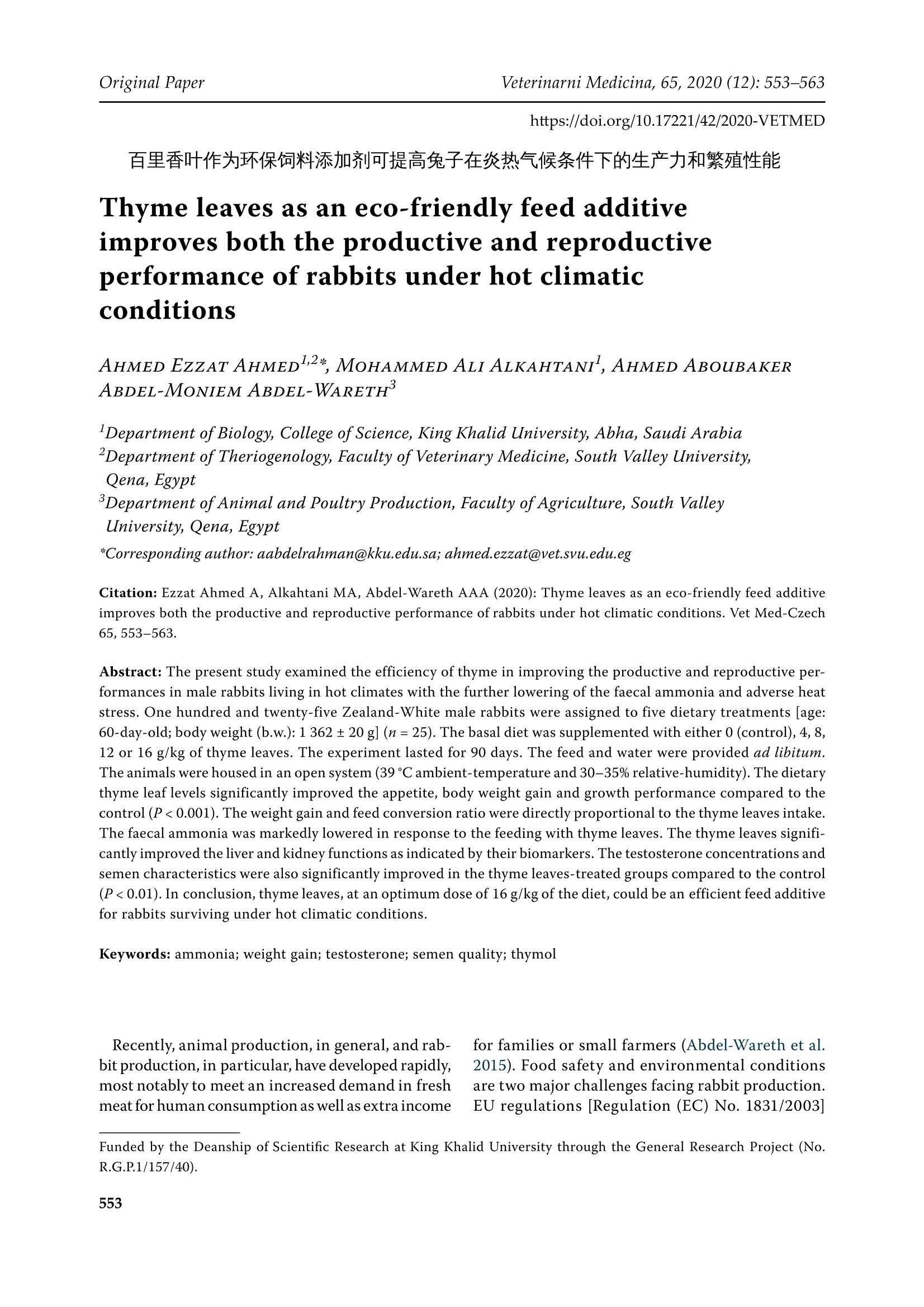
-
2/11
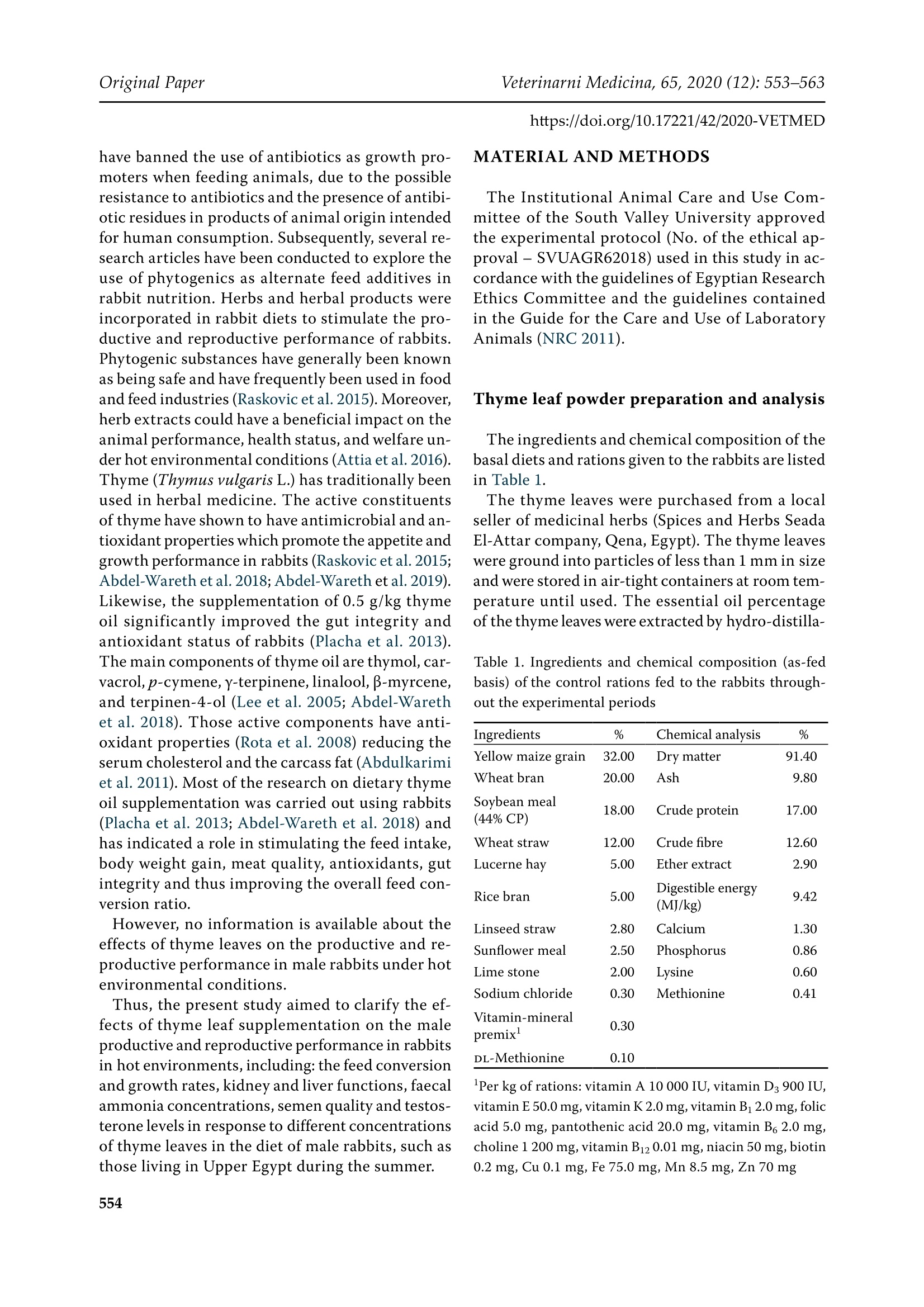
还剩9页未读,是否继续阅读?
继续免费阅读全文产品配置单
中国格哈特为您提供《兔饲料和排泄物中蛋白质和脂肪含量测定》,该方案主要用于畜牧中动物营养与健康检测,参考标准《暂无》,《兔饲料和排泄物中蛋白质和脂肪含量测定》用到的仪器有格哈特带自动进样器凯氏定氮仪VAP500C、格哈特凯氏消化系统KT8S、格哈特维克松废气实验室废物处理系统涤气VS、德国加液器MM、滤纸筒。
我要纠错
推荐专场
定氮仪、凯氏定氮仪、Dumas定氮仪
更多相关方案


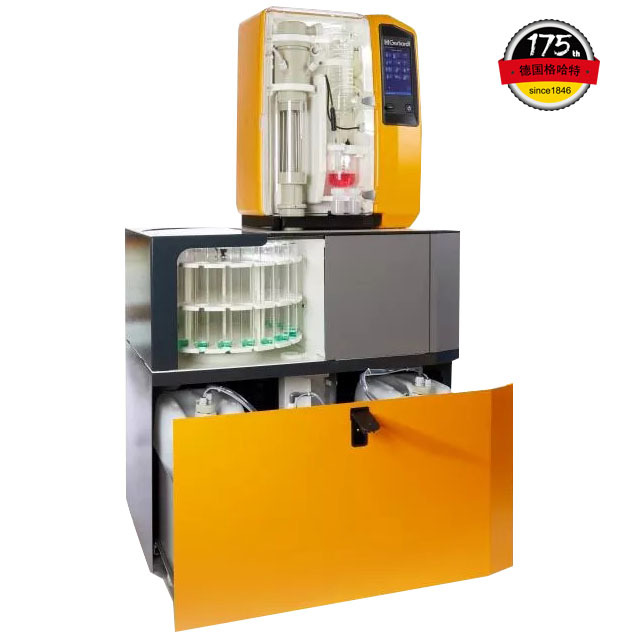
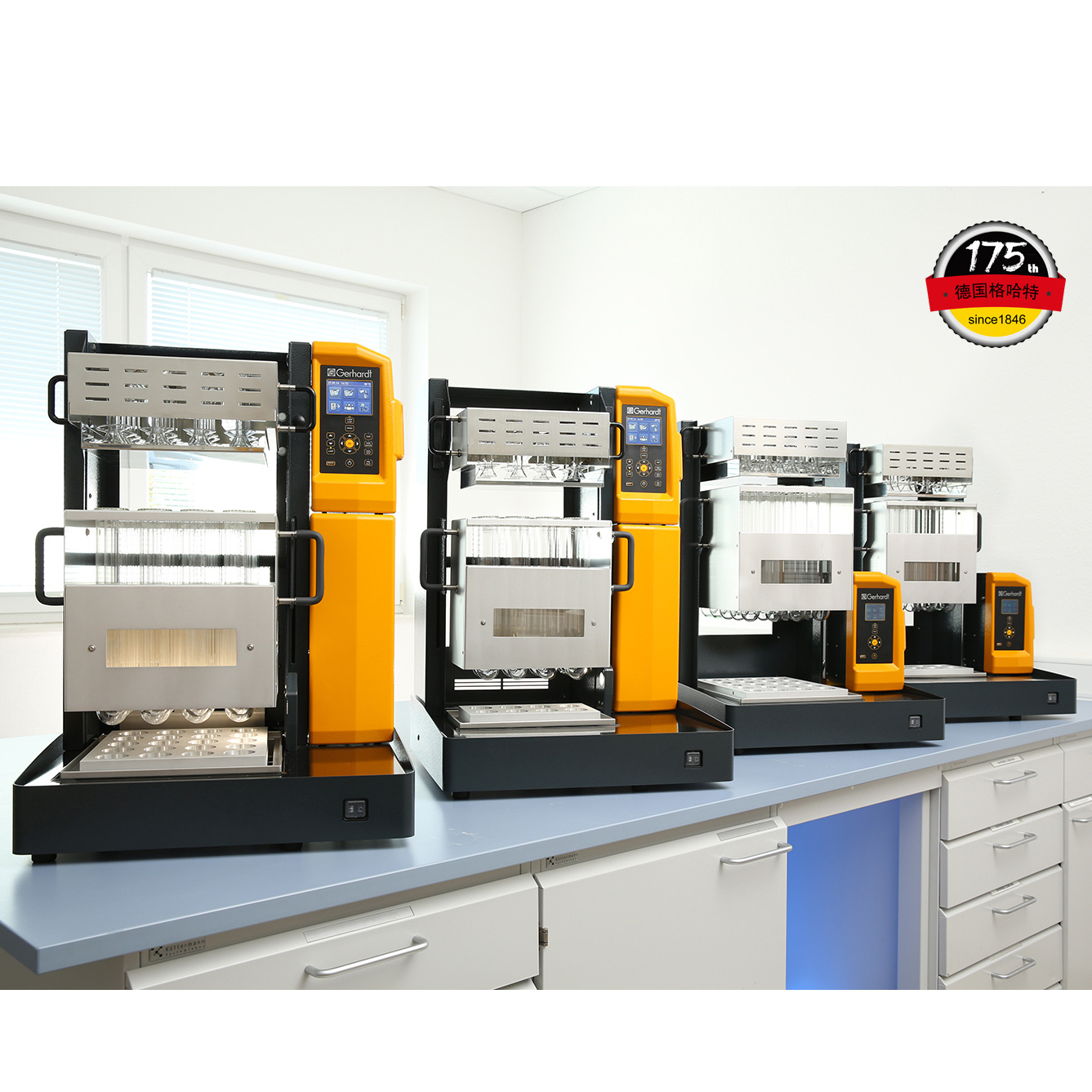
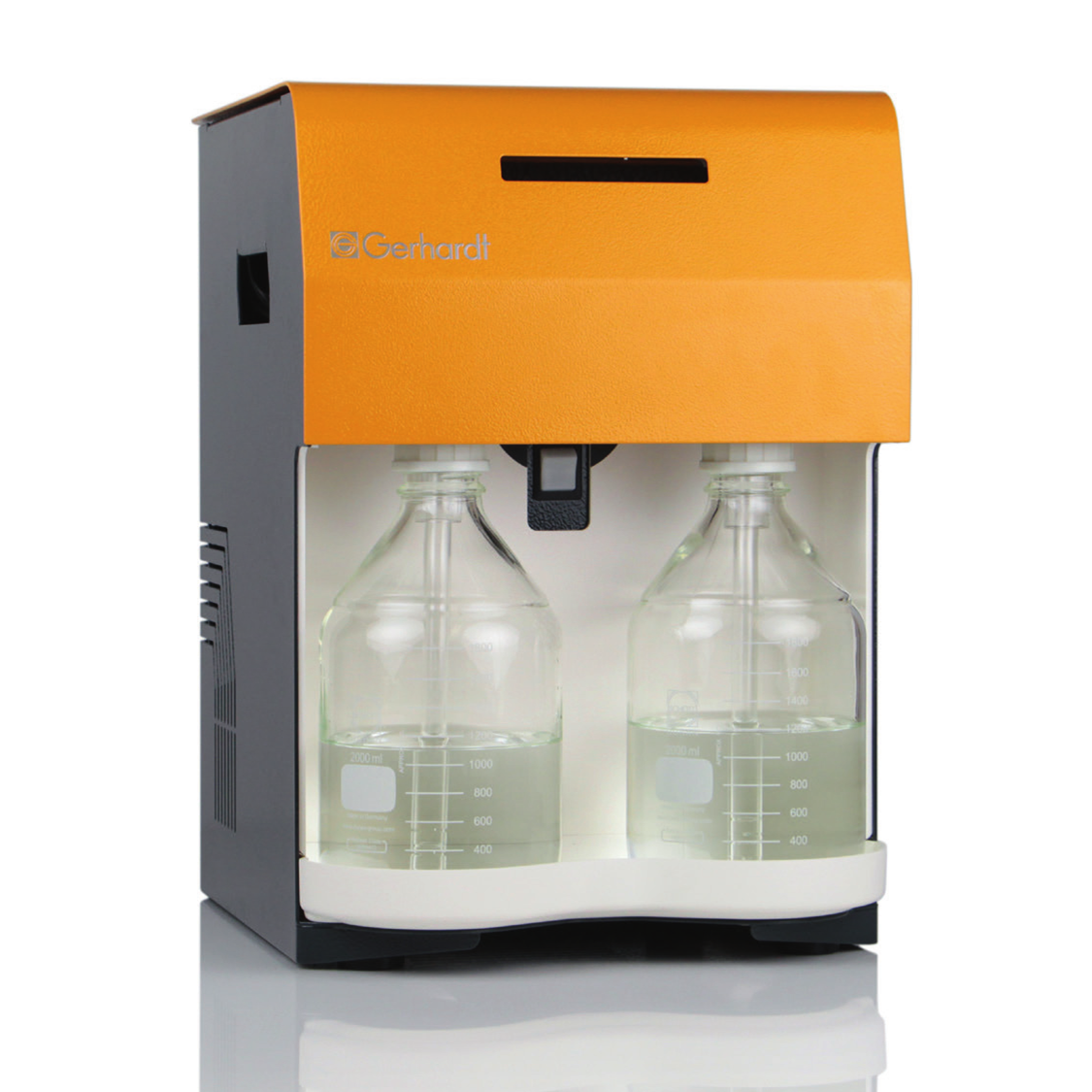
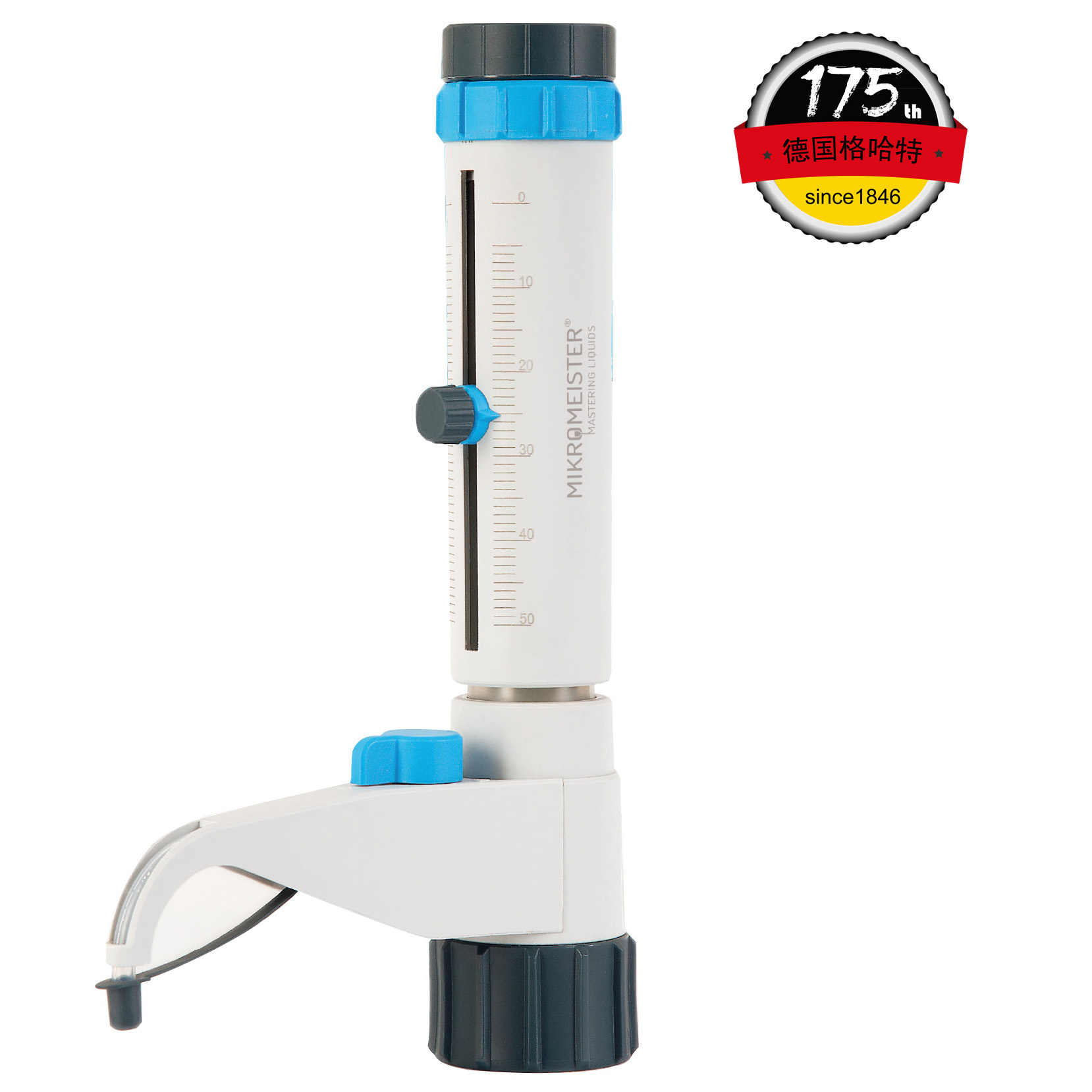
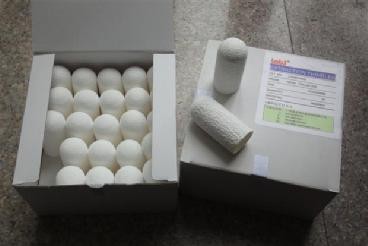


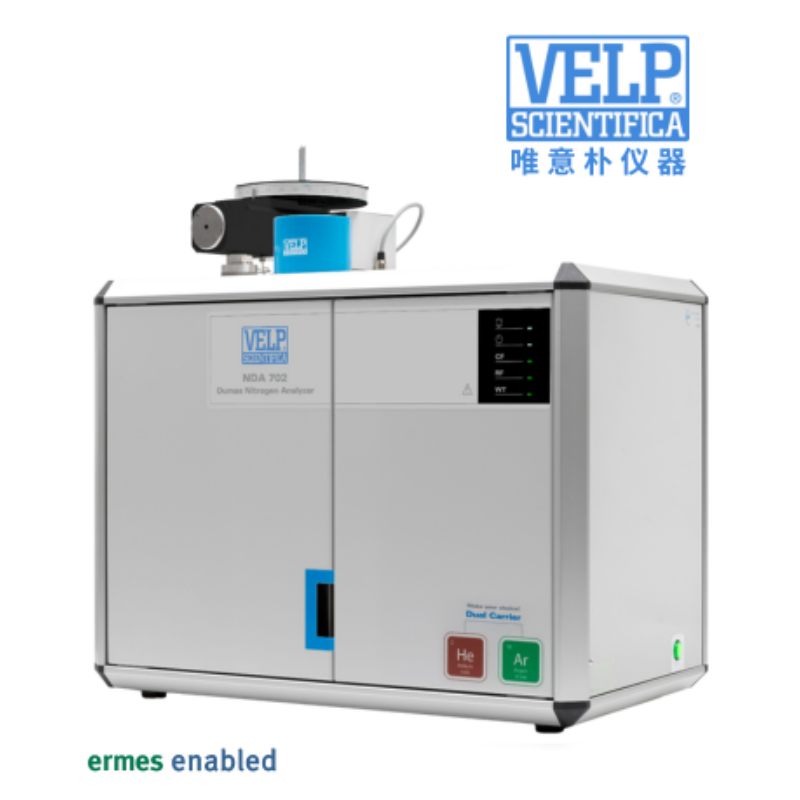
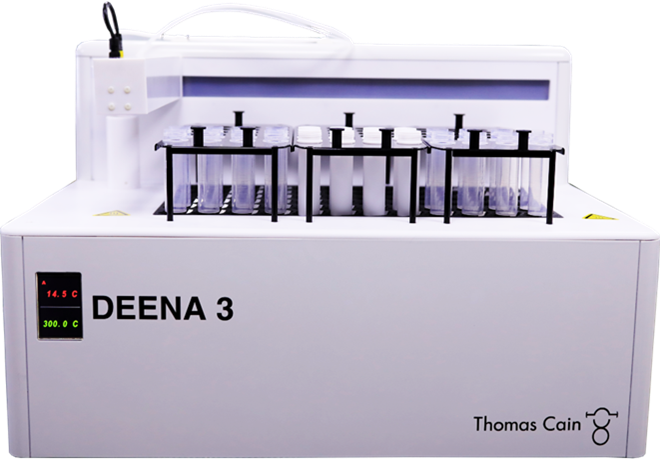

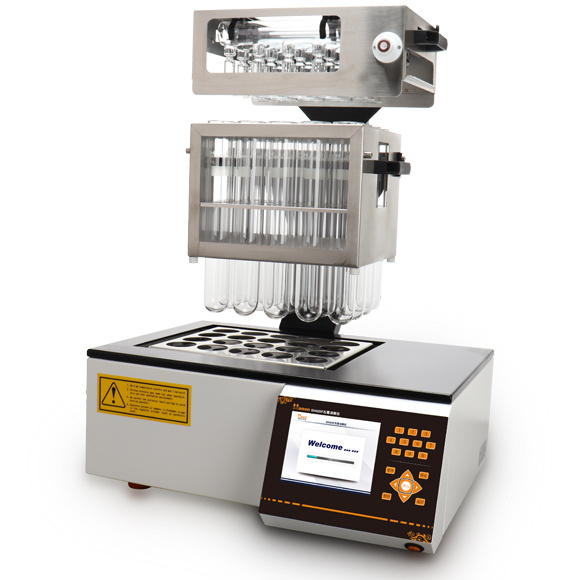
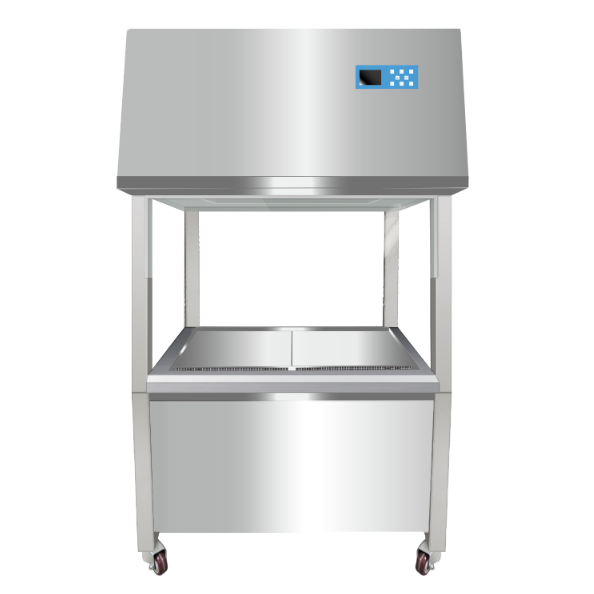



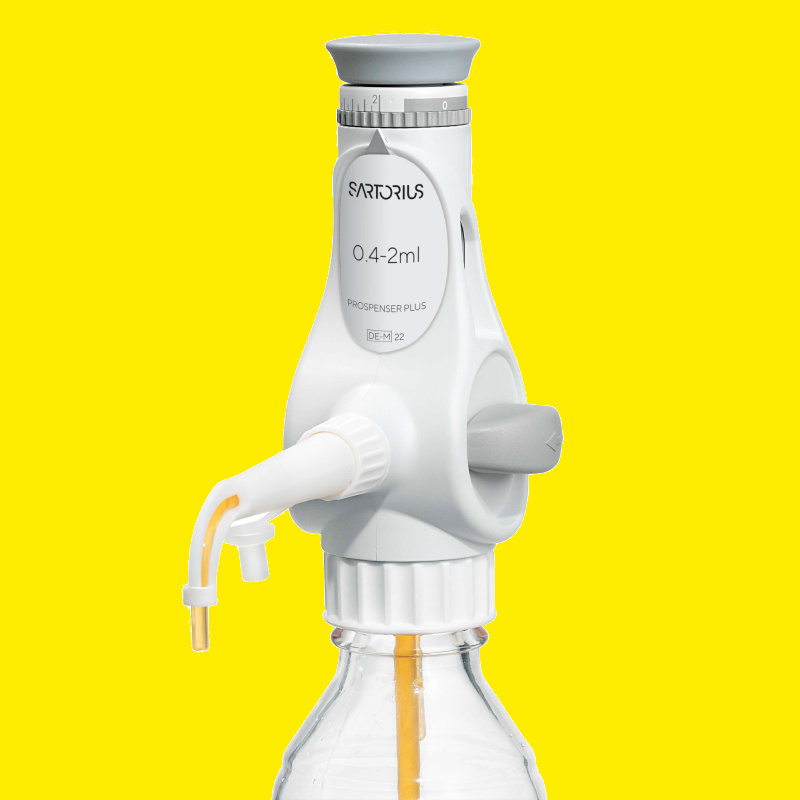
 咨询
咨询